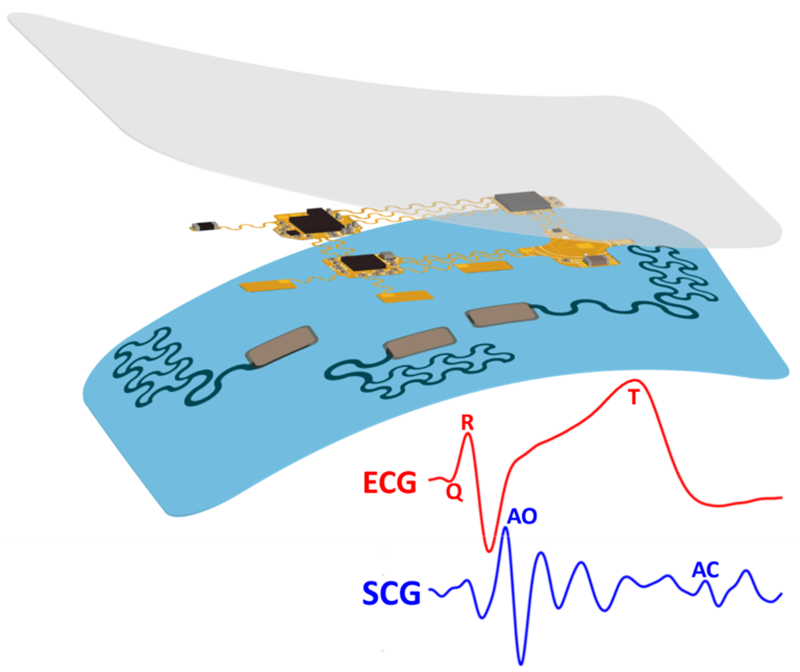Researchers Have Developed An Ultra-Thin And Lightweight Electronic Tattoo Called An E-Tattoo That Attaches To The Chest For Continuous Heart Monitoring Outside Of A Clinical Setting.
This electronic tattoo includes two sensors that provide a clear picture of the heart’s health and give doctors a better chance to detect the symptoms of heart disease in the early stages.
“Most heart diseases are not very obvious,” says Nanshu Lu, a professor in the Department of Mechanical, Aerospace, and Engineering at the University of Texas and lead author of the study in Advanced Electronic Materials. The damage is done in the background, and we don’t even know it.
If we can have continuous and mobile monitoring at home, we can make timely diagnoses and treatments, and if we can do this, 80% of heart diseases can be prevented.
As a follow-up to the previous Electronic Chest Tattoo project, this new version is wireless and mobile, activated by a series of tiny active circuits and sensors carefully arranged and connected by stretchable connectors and via a medical dressing attached to the chest. Transparent devices are far less intrusive than other monitoring systems and are more comfortable for patients.
No ready-made solution exists for long-term and convenient monitoring outside the clinical setting.
Doctors can run tests on patients when they visit, but they may miss some heart problems because there are no symptoms.
The electronic tattoo weighs only 2.5 grams and is powered by a battery the size of a small coin. The battery life is more than 40 hours and can be easily replaced by the user.

This tattoo offers two critical measurements of the heart. The first is an electrocardiogram or ECG, an electrical signal from the heart. The second one is seismocardiogram or SCG, a tough call from the spirit that comes from the heart valves.
ECG can be measured with mobile devices such as Apple Watch, and SCG can be monitored via a stethoscope. But no mobile solution comes close to a stethoscope or does both measurements.
Lowe says these two measurements, electrical and mechanical, can provide a more comprehensive picture of what’s happening in the heart. Many features of the heart can be extracted from two simultaneously measured signals in a non-invasive way.
Monitoring and synchronizing these two factors makes it possible to measure cardiac intervals, which is a crucial indicator of heart disease and other problems.
Researchers have already tested the device on five healthy patients in everyday settings, and the results showed a low measurement error rate compared to currently available monitoring options. The next step involves further testing, confirming the initial results, and extending it to different types of patients.
The project results from a multi-university partnership of researchers who received a 2021 grant from the National Science Foundation’s ASCENT program to study electronic chest tattoo technology.
Lu and his team have refined and adapted electronic tattoo technology to measure multiple body parts, such as the palm, and conditions like pneumonia.